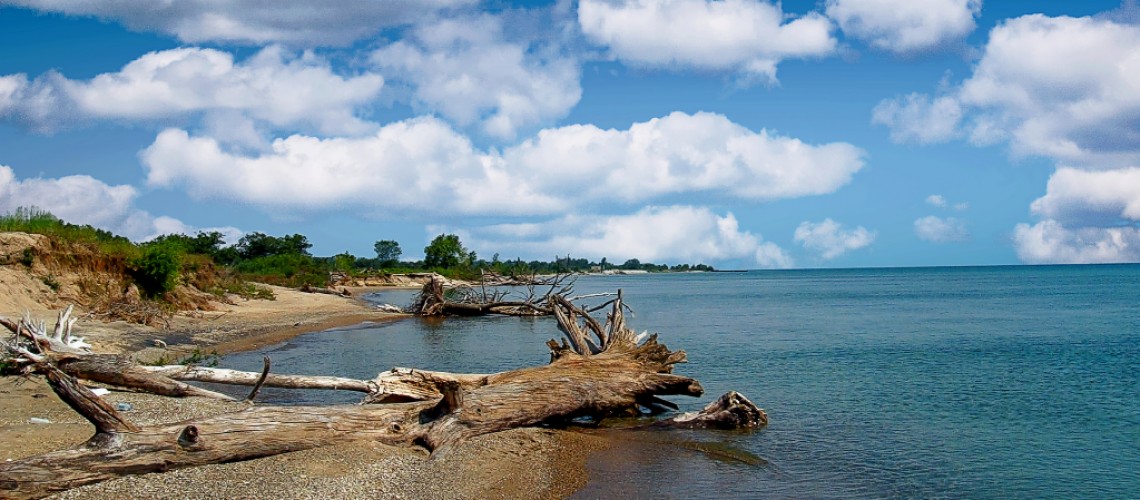By: Lindsay Keeney, IEC Conservation Director
If you’re a conservation professional, you have probably heard whisperings of “30×30” for years; decades even. The idea of protecting thirty percent of our planet by the year 2030 is far from new. But, if you are like many of our supporters– and you are not necessarily frequenting conservation newsletters, social media, scientific journals and professional conservation conferences, you may have just heard about this movement more recently.
What is 30×30?
About two dozen biologists, advocates, organizations, naturalists, and indigenous leaders have come to the independent conclusion and official recommendation that in order to spare our planet the worst impacts of climate change, including significant habitat and species loss, we need to protect at least half of our planet’s natural areas. In other words, thirty percent is an intermediate, but significant, step in the journey toward protecting 50 percent of our planet.
Combined with innovations in clean energy, Nature-Based Climate Solutions offer a unique opportunity to address climate change by promoting conservation and improved land management actions that avoid greenhouse gas emissions or increase carbon storage, while improving biodiversity and building more resilient, healthy communities.
Large conservation organizations, including the World Wildlife Foundation, NRDC, Sierra Club and the Nature Conservancy have pushed the global campaign for 30 percent by 2030 to the front of recent conversations regarding climate change and biodiversity.
Where is the United States in this goal?
Nationwide, about 60% of U.S. land is in its natural condition, or close to it, and 12% of these areas are already under some form of legal protection. This puts us in the top five countries worldwide for retaining land in its natural state. It also means our opportunity to achieve the 30 by 30 goal is within reach if we build the political will and right strategies to get it done.
However, the United States has been slow to get on board, especially during the Trump administration years when federal agencies were more focused on upending critical environmental protections. In 2019 though, a bipartisan resolution was introduced in Congress urging the federal government to establish a national goal of conserving at least 30 percent of the land and ocean of the United States by 2030.
On January 27, 2021 the Biden-Harris Administration signed Executive Order 14008 on Tackling the Climate Crisis at Home and Abroad including the 30 x 30 resolution to protect our nation’s land and waters as a goal in our national conservation, agriculture and reforestation efforts. This huge win for conservation did not come easily; conservation groups had been working behind the scenes for quite some time to urge the administration to adopt this commitment to nature.
Federal, State and Local Partnerships
In fact, our team at IEC worked with our federal partners at the League of Conservation Voters to demonstrate support for this approach among decision makers in Illinois. In a nation-wide campaign since President Biden took office, 339 state legislators from across the country, including 50 from here in Illinois, signed onto a letter urging the Biden transition team to take up 30 x 30 as a priority. In addition, 70 of the nation’s mayors pledged their support, including Chicago’s Mayor Lori Lightfoot.
In signing this resolution, President Biden also directed his administration to develop a report and steps that the federal government can take to work with state, local, and tribal governments, along with other critical stakeholders, to ensure that the 30 x 30 goal is achieved. We’re already seeing 30 x 30 resolutions introduced in a few state legislatures including Michigan, California, New York, South Carolina, and Hawaii.
The efforts of state governments are crucial to reaching the 30 x 30 goal, however, there is still a good amount of skepticism on how 30 percent will be achieved by each state, or if 30% land and water conservation within individual states should even be the goal.
What about Illinois?
Here at IEC, we have been busy thinking about what this campaign could mean for Illinois. While the United States overall is well positioned to make a major impact in the global campaign to reach 30 x 30, Illinois on the other hand, is in quite a different place. Just 0.1% of our land in Illinois remains now as it did 250 years ago and only about 4% of our land is legally “protected”. It’s important to note that 75% of Illinois land (27 million acres) is in agriculture.
Reaching 30 x 30 in Illinois is a mighty, but worthy challenge. We’re going to have to get creative to do it.
Luckily, Illinois-based conservationists deeply understand the unique value of our state’s working lands, privately owned acres, communities, and local food system. It’s a delicate balance to strike. We’ll have to figure out how we can preserve the incredible value of our land and water without compromising the value that land already provides to our communities.
Where does the Illinois conservation community go from here?
We know the startling statistics; that the United States loses a football fields’ worth of natural area every 30 seconds, and that three-fourths of the planet’s land has been “significantly altered” by human activity. Now, we have begun organizing our partners, educating decisionmakers and listening to our communities as we begin the process of answering this question and thinking through how Illinois can contribute to this federal priority at the state level.
Daily, we attend meetings, listening sessions, working groups, zoom lectures, etc. connecting with our remarkable conservation community who are already laying the groundwork, making plans, doing research, and taking action. In fact, there are amazing folks in Illinois already working towards so many strategic goals, including our State’s Wildlife Action Plan, the Nutrient Loss Reduction Strategy, and the State Water Plan, just to name a few.
How do we harness the incredible knowledge and strategy already present within these various communities and leverage the work already being done? How do we as a community speak with one powerful voice to set goals and make a unified plan? Considering the federal administration’s commitment to this work, how do we as a state utilize any potential federal resources in the most effective way? What policy priorities will further this work?
I hope you didn’t come to this blog post for the answers, because for the most part, all I have are the questions and the conversations we hope to foster by bringing together all of the folks who we believe do have the answers.
The only thing I know for sure is that finding diverse and innovative ways to protect landscapes that support local communities and preserve our land’s specific value will be critical in achieving our “30 x 30” goal.
A New Coalition
There are so many conservation, sustainable agriculture, environment, environmental justice organizations, as well as farmers and farm businesses, sportsman groups, outdoor recreation organizations and businesses that need to have a role in answering these questions and shaping this work.
As the conservation director here at IEC, I am in the unique position of being able to observe all of these efforts and see the need for a coalition of voices to coordinate shared priorities and align our work with the international 30 x 30 campaign and national 30 x 30 goal.
Our team thinks it’s time to create a new conservation climate table to facilitate collaboration around nature-based climate solutions, un-silo our collective efforts and protect 30 percent of Illinois by 2030.
So IEC is doing what we do best: we’re building a strong coalition of stakeholders to do just that across strategies related to land conservation, sustainable agriculture, local food, green job development, environmental justice, community planning, and more. We’d like to see this table leverage existing coalition work and also seek funding, particularly for under-resourced groups to enable expanded participation.
Optimistic About Our Future
Though this work has undoubtedly raised more questions than answers, we believe that this worldwide campaign and President Biden’s new federal commitment provide an unprecedented opportunity to harness our local expertise and momentum to drive large-scale change and secure conservation priorities here in Illinois. There are so many reasons to feel optimistic about this endeavor. In today’s increasingly divided political environment, conservation and specifically 30 x 30 continues to resonate with folks from all sides of the political spectrum.
I would like to leave you with these eight initial principles for consideration, identified by The Center for American Progress, that I believe are worth reprinting here. I hope to adopt these principles into our Illinois-based work, and encourage you to read the full article.
- 30 x 30 should be a shared national goal, but conservation objectives and strategies should be designed and implemented locally and regionally.
- The pursuit of a 30 x 30 goal must uphold the sovereignty of tribal nations and help American Indian, Alaska Native, and Native Hawaiian communities fulfill their own priorities for the stewardship of natural, cultural, and historic resources.
- The protection of more of America’s lands and waters must yield a more equitable distribution of nature’s benefits to all people, including communities of color and economically disadvantaged communities.
- Support the conservation efforts of private landowners, working waterfronts, and the private sector.
- Measuring progress toward a 30 x 30 goal should account for a wide range of enduring conservation solutions.
- The restoration of degraded lands and coasts will be critical to achieving 30 x 30.
- Science is indispensable to making smart conservation decisions in a world in which climate is changing.
- Protecting 30 percent of lands and waters is not the last 30 percent.

Thank You!
The Illinois Environmental Council Education Fund would like to thank the Gaylord and Dorothy Donnelley Foundation for their generous support.

